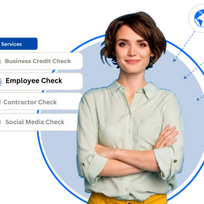Beyond Screening: Tools Every Property Manager Should Use
- James Avery
- May 7
- 3 min read
Updated: Sep 4
Property management isn’t just about finding tenants anymore. Today’s property managers must handle compliance, maintenance, budgeting, and communication. They are expected to wear many hats. The tools you use can either streamline the chaos or complicate it further. Screening tenant applicants is only a piece of the puzzle. To remain competitive, protect your assets, and ensure a smooth experience for tenants, you need smarter systems in place.
According to the National Apartment Association, the average property manager oversees over 200 units. They spend nearly 30% of their time on administrative tasks. This significant time drain can be reduced with the right tools. Effective technology can help you accomplish more in less time. It will keep tenants satisfied and ensure you remain compliant—without losing your sanity.
The Importance of Advanced Automation
In today's fast-paced environment, property management requires efficient systems. Automation plays a crucial role in streamlining operations. It saves time and reduces human error. Let's explore the essential tools every property manager should have in their toolkit, beyond basic tenant screening.
Lease Management and Accounting Software
Spreadsheets are no longer sufficient, especially when managing multiple leases, rent schedules, and renewals. You need a platform capable of handling everything from billing to compliance with modern accounting standards.
This is where lease accounting software becomes essential. These tools enable you to:
Track lease terms and renewal dates in one dashboard.
Stay compliant with accounting standards like ASC 842.
Generate reports for audits or financial planning.
Automate billing and invoicing processes.
Manage multiple properties with unified reporting.
Using dedicated lease software also minimizes the risk of costly human errors. If you're still juggling PDFs and spreadsheets, it's time for an upgrade.
Maintenance Request and Work Order Systems
One of the quickest ways to lose tenant trust is through slow or mismanaged maintenance. Tenants want prompt fixes. Property managers need an organized system to track tasks. You must know what has been completed, what’s pending, and what may fall through the cracks.
A solid maintenance tool should:
Let tenants submit work orders through a portal or app.
Automatically assign jobs to vendors or maintenance staff.
Track status and resolution times.
Store maintenance history for each unit.
Send alerts for recurring or preventative maintenance.
Look for platforms that integrate with your leasing or accounting systems. This ensures all information resides in one ecosystem.
Communication Platforms
Phone calls and sticky notes are not reliable communication strategies. Tenants expect the same responsiveness they get from rideshare apps or food delivery services. Property managers need quicker, clearer ways to connect.
Modern messaging tools provide several advantages:
Send announcements via SMS, email, or app notifications.
Automate rent reminders or appointment updates.
Maintain communication logs for easy reference.
Enable two-way chat with tenants and vendors.
Some platforms even translate messages for multilingual tenants or create emergency broadcast alerts during natural disasters or power outages.
Virtual Tour and 3D Listing Tools
In today's world, many renters expect the option to tour units remotely. Virtual tours save time, attract out-of-town renters, and reduce the number of no-shows for live showings.
The best platforms offer:
360° walk-throughs or guided video tours.
Interactive floor plans with measurement tools.
Embedded scheduling options for in-person follow-ups.
Integration with popular listing sites like Zillow, Apartments.com, or Zumper.
Bonus: Virtual tours make your listings stand out. This helps units rent faster and cuts down on vacancy time.
Tenant Portals for Self-Service
Today’s renters expect online access to pay rent, submit requests, and update contact information—without having to call. A tenant portal empowers them and lessens your workload.
Look for tenant portals that include:
Secure rent payment processing (ACH, credit, or debit).
Auto-pay and recurring billing options.
Maintenance request submission and tracking.
Document storage (lease agreements, notices, etc.).
Messaging and notification settings.
A robust self-service option is not only convenient, but it’s also a selling point that differentiates your property from others.
Analytics and Reporting Dashboards
If you can't measure it, you can't improve it. A good reporting tool offers insights into your operations. This helps you reduce costs, forecast better, and stay ahead of potential issues.
Useful analytics features include:
Rent collection rates and delinquencies.
Vacancy and turnover metrics.
Maintenance costs per unit.
Lease renewal rates.
Profit/loss statements by property.
These metrics allow you to spot trends. You can make data-driven decisions instead of operating on guesswork.
Final Thoughts
In today’s competitive rental market, it’s not enough to screen tenants and collect rent. Property managers require a comprehensive toolkit. This toolkit should support modern leasing, communication, maintenance, and reporting needs.
Tools like lease accounting software, tenant portals, and maintenance platforms are essential. When your operations run smoothly behind the scenes, tenants notice. Well-organized and accessible data leads to business growth. The technology is available, and its advantages are clear.
The next step? Start building your toolkit and witness your properties operating better than ever.



























